Los forceps son instrumentos muy útiles que nos permiten extraer y sostener las piezas dentarias para que estas adquieran movimiento y puedan salir de la cavidad bucal, cada pieza dentaria es diferente por ende cada grupo dentario debe tener un forceps específico que les permita tomar el diente con mayor facilidad existen diferentes tipos de forceps unos son para los dientes superiores y otros para los dientes del maxilar inferiores, en esta publicación les hablaré de cada uno de ellos.
Forceps are very useful instruments that allow us to extract and hold the teeth so that they can move and leave the oral cavity. Each tooth is different, therefore each dental group must have a specific forceps that allows them to take the tooth more easily, there are different types of forceps, some are for the upper teeth and others for the lower jaw teeth, in this publication I will talk about each one of them.
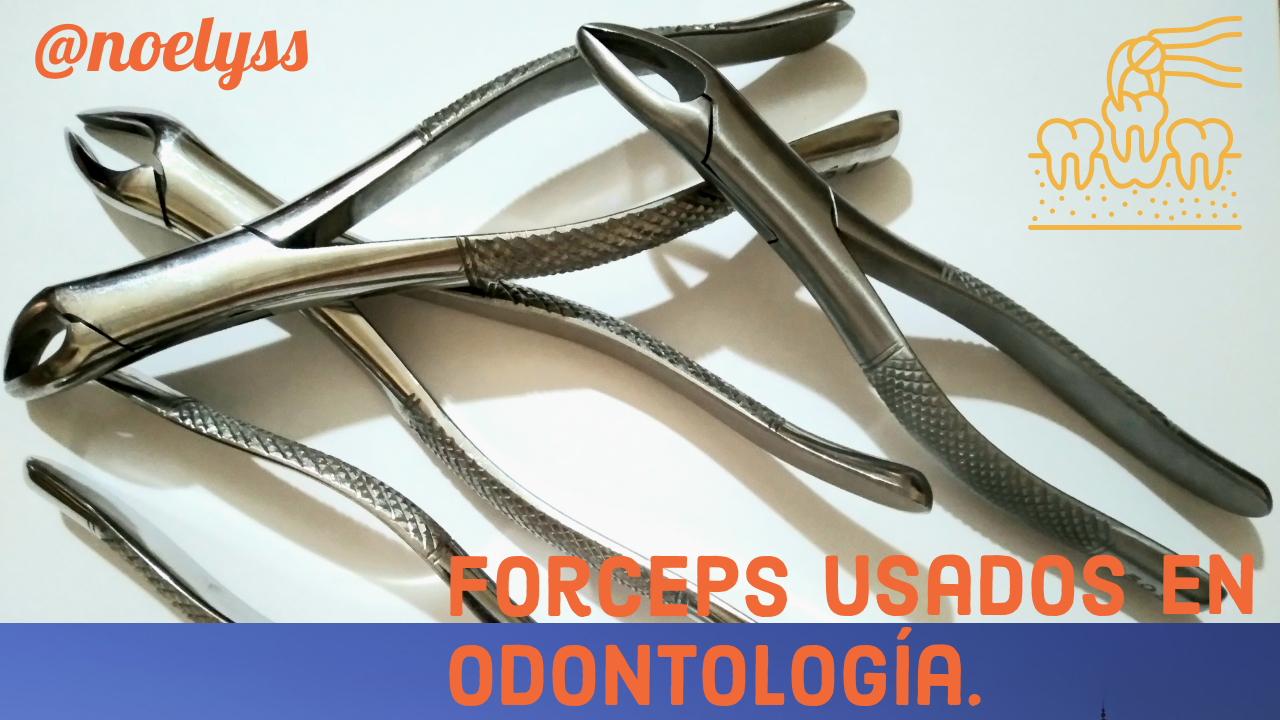
En esta imagen podemos apreciar los diferentes forceps por arcada dentaria maxilar superior y maxilar inferior, incluyendo aquellos forceps infantiles para niños, que son de un menor tamaño ya que los dientes de los pacientes pediátricos son de menor diámetro y las piezas dentarias permanentemente son de mayor tamaño y raíces más largas y anchas.
In this image we can see the different forceps by maxillary and mandibular dental arch, including those for children's forceps, which are smaller in size as the teeth of paediatric patients are smaller in diameter and the teeth are permanently larger and the roots are longer and wider.
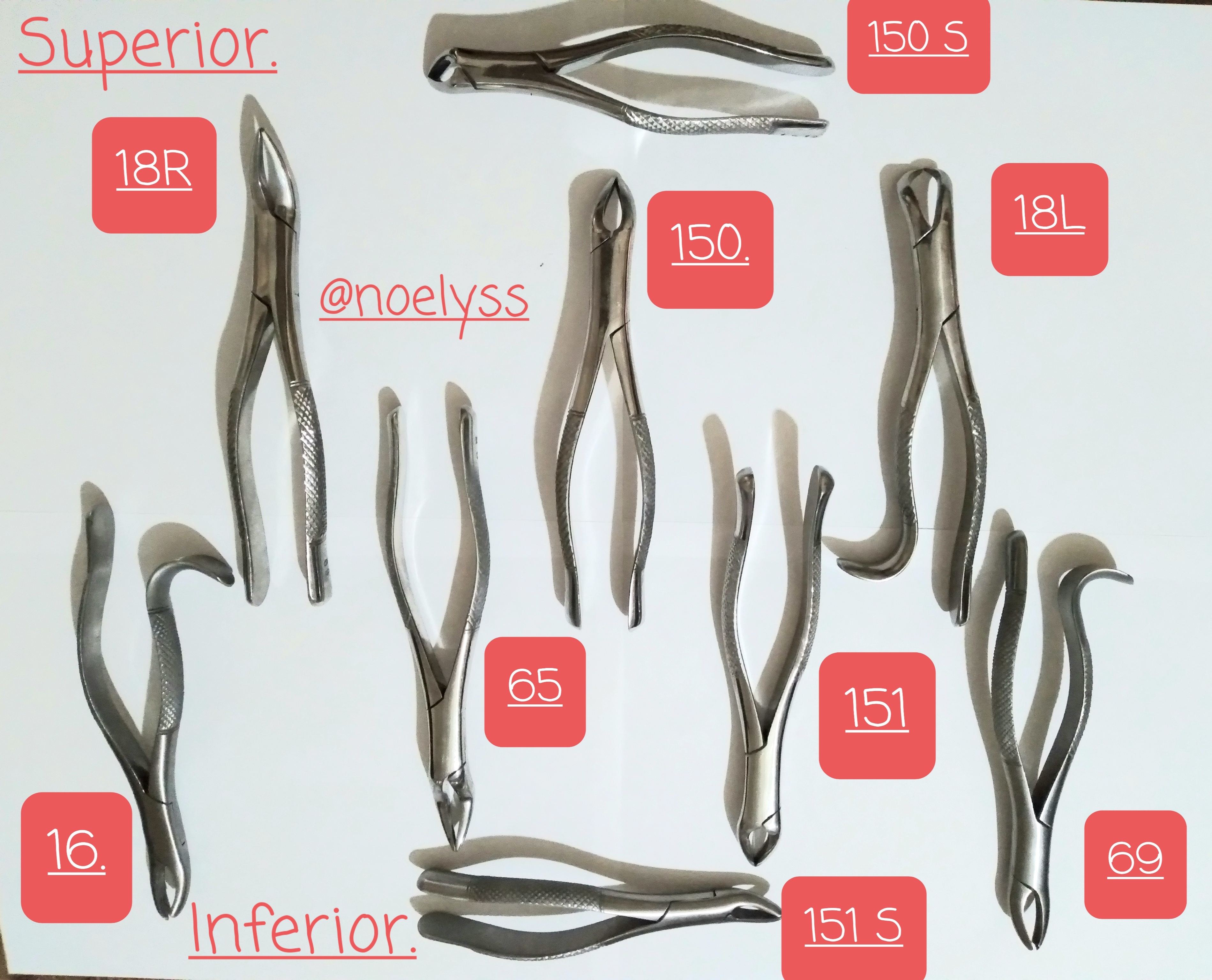
Este es el forceps 150 es conocido como el universal, ya que también puede ser usado en diferentes estructuras dentarias pero mayormente debe ser usado en el maxilar superior en incisivos centrales y laterales, también en caninos y primeros, segundos premolares.
This is the forceps 150 is known as the universal forceps, as it can also be used on different tooth structures but mostly it should be used in the upper jaw on central and lateral incisors, also on canines and first, second premolars.

El 151 es usado en el maxilar inferior en incisivos centrales, laterales, caninos, primeros premolares y segundos, se tiende a reconocer los inferiores ya que tienen una parte activa como el pico de un loro que permite un mayor agarre en los dientes inferiores.
The 151 is used in the lower jaw on central incisors, lateral incisors, canines, first premolars and second premolars, the lower ones tend to be recognised as they have an active part like a parrot's beak which allows a better grip on the lower teeth.
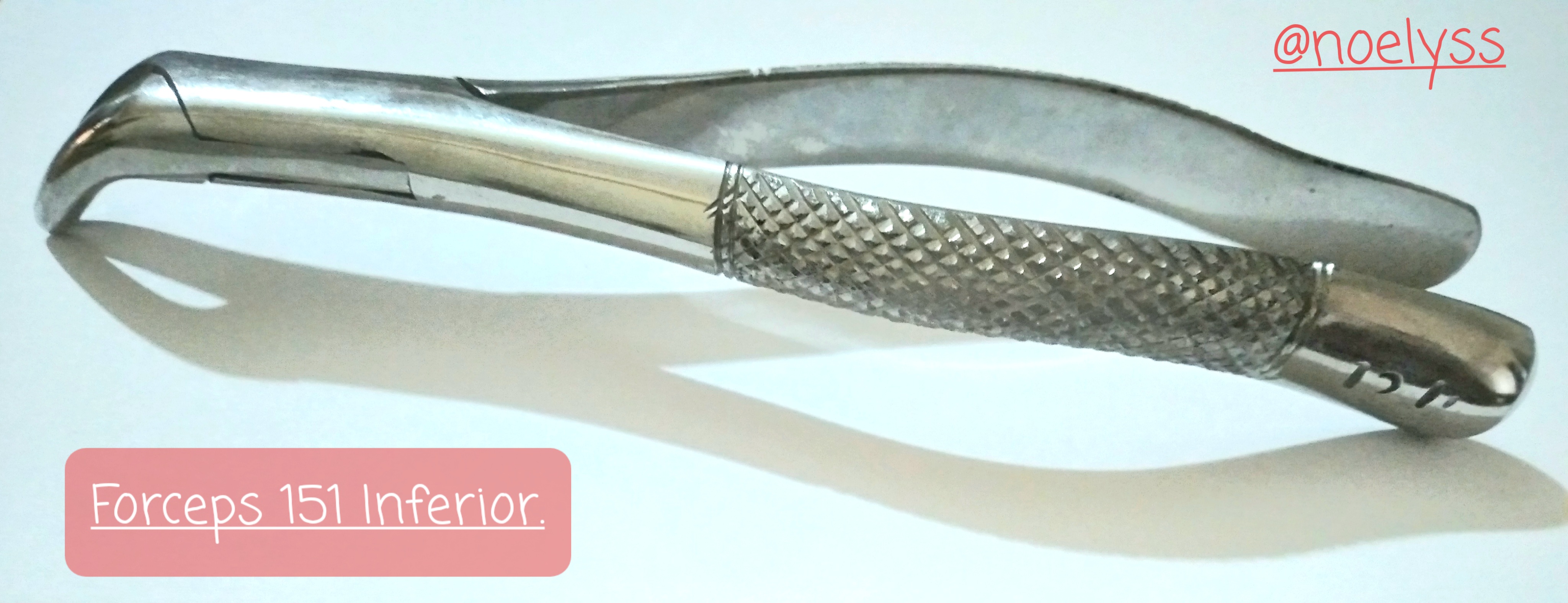
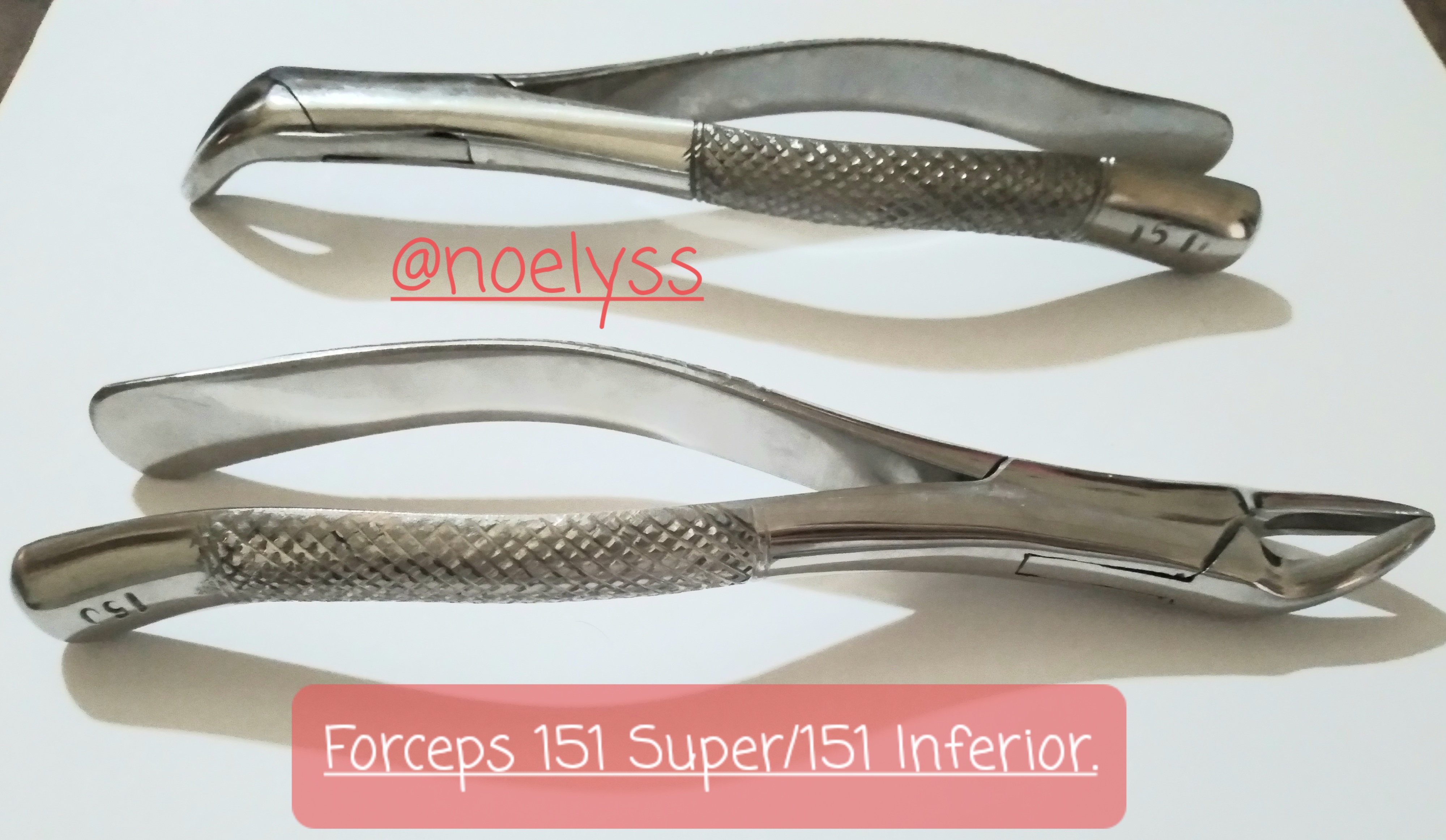
Estos dos Forceps son el 150S que es para el maxilar superior pero en pacientes pediátricos, nos sirve para extraer todos los grupos dentarios en la dentición temporal, y el forceps 151S que este es para los dientes inferiores en pacientes pediátricos. También se pueden usar para dientes incisivos permanentes que sean de un pequeño diámetro.
These two forceps are the 150S which is for the upper jaw but in paediatric patients, it can be used to extract all groups of teeth in the primary dentition, and the 151S forceps which is for the lower teeth in paediatric patients. They can also be used for permanent incisor teeth with a small diameter.

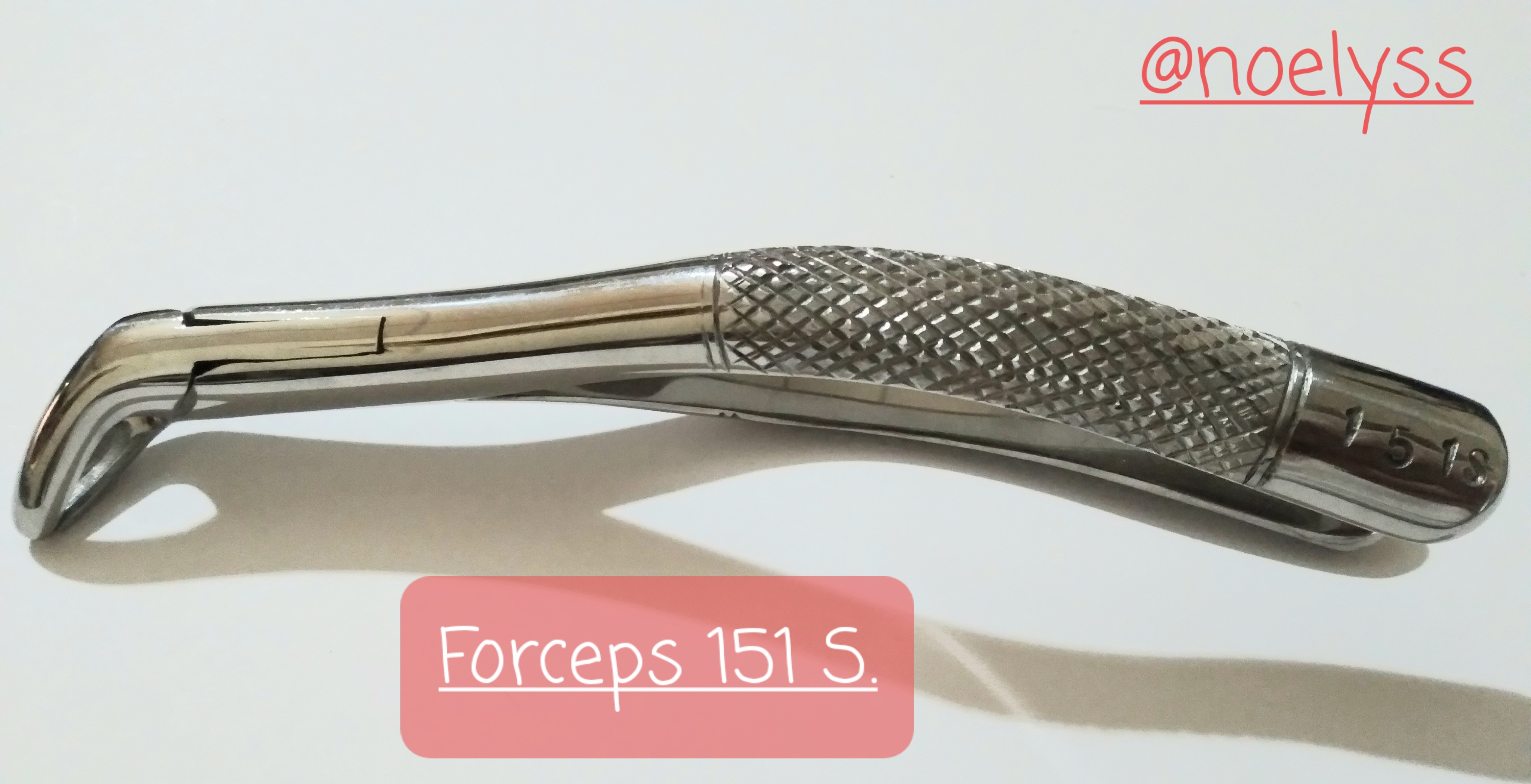
El primer forceps que vemos en la imagen es el 18R que este debe ser usado para los primeros y segundos molares derechos, el de la imagen debajo es el 18L que es para el lado contrario L, es decir el izquierdo para los primeros y segundos molares.
The first forceps we see in the picture is the 18R which should be used for the right first and second molars, the one in the picture below is the 18L which is for the opposite side L, i.e. the left one for the first and second molars.

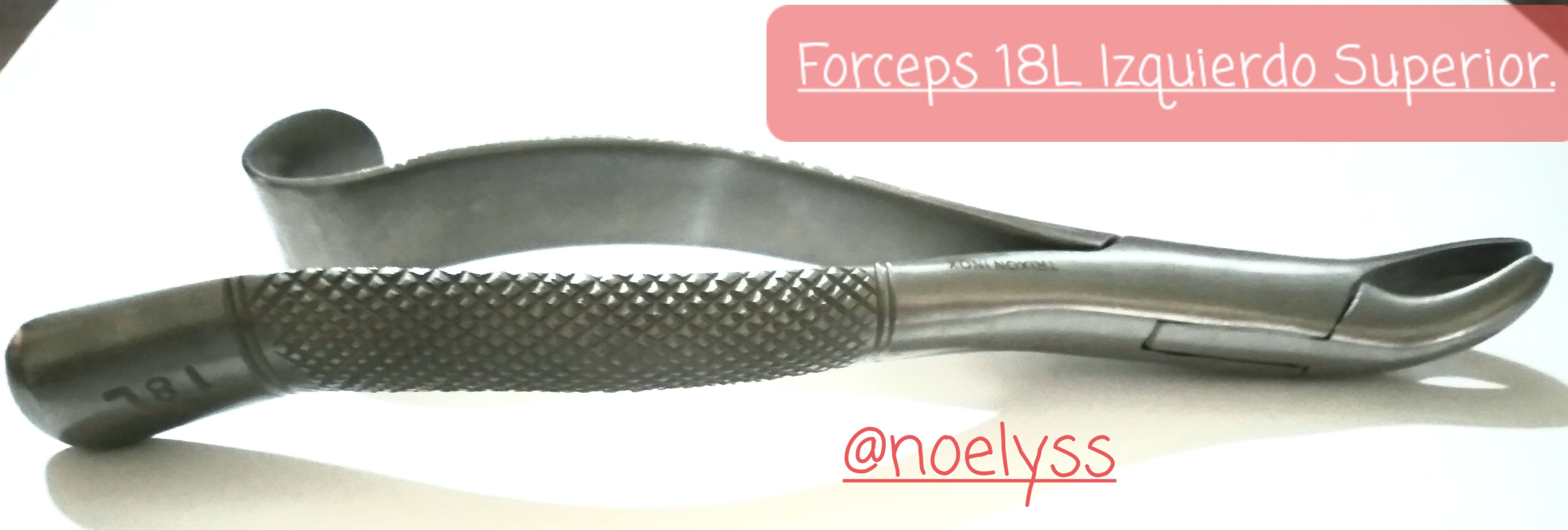
Este es el forceps 69 que debe ser usado para los restos radiculares de los molares, los restos radiculares son esas piezas dentarias que ya han pérdido toda su corona y solo quedan las raíces inmersas en ellas. Este forceps nos permite extraer con mayor facilidad las raíces de los molares únicamente.
This is the forceps 69 that must be used for the root remains of molars, the root remains are those teeth that have already lost their crown and only the roots are immersed in them. This forceps allows us to extract only the roots of the molars more easily.

Este forceps 65 es conocido como raicera ya que también nos ayuda a extraer las raíces de los incisivos centrales, laterales y caninos. Cabe destacar que en caso de no tener el forceps 69 podemos extraer las raíces de los molares con el mismo.
This forceps 65 is known as raicera as it also helps us to extract the roots of the central incisors, lateral incisors and canines. It should be noted that in case we do not have the forceps 69 we can extract the roots of the molars with the same forceps.
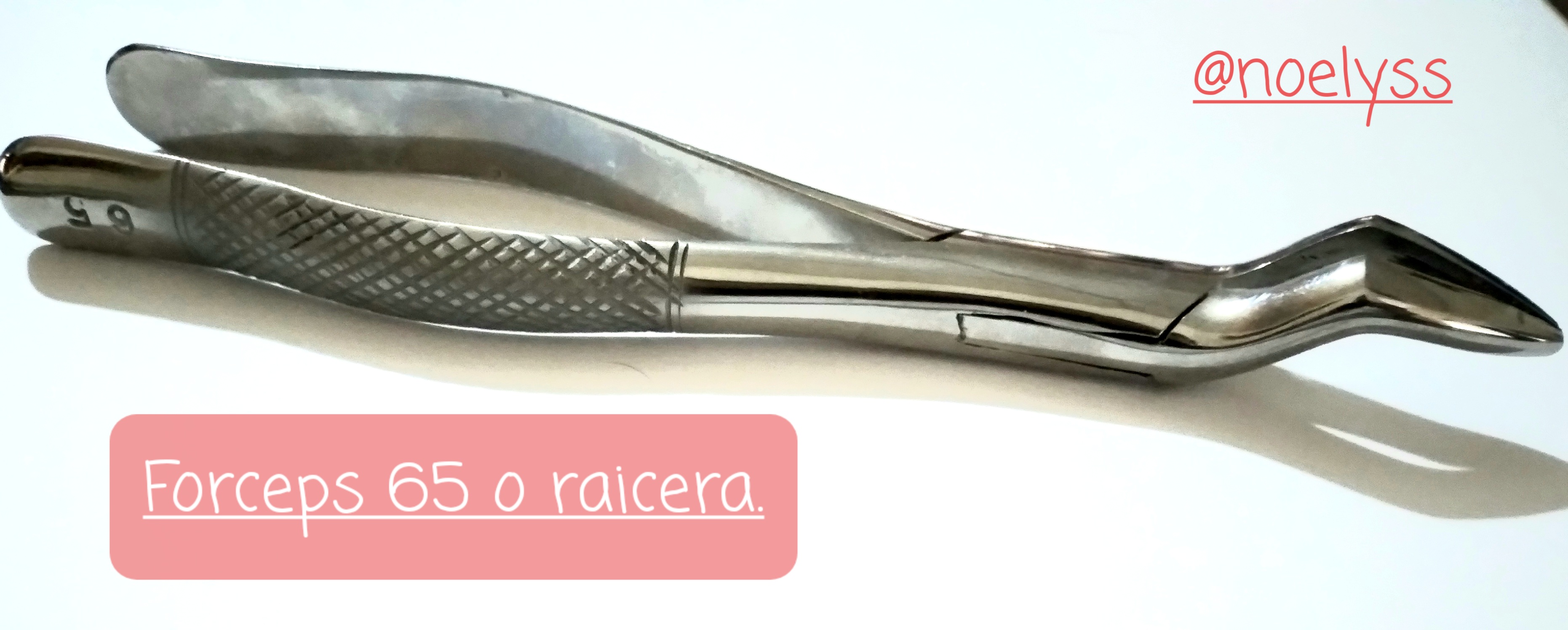
Este último es el forceps 16 se utiliza para los molares inferiores y es conocido como el cuernavaca, este nos permite extraer los primeros, segundos y terceros molares inferiores.
The latter is the forceps 16 used for lower molars and is known as the cuernavaca, which allows us to extract the first, second and third lower molars.

Espero les haya gustado mucho esta publicación y puedan conocer más de los instrumentos usados en odontología.
I hope you have enjoyed this publication and that you will learn more about the instruments used in dentistry.
Referencia Informativa/Reference Informative:
https://www.dvd-dental.com/blogodontomecum/clasificacion-nombre-de-los-forceps-dentales/

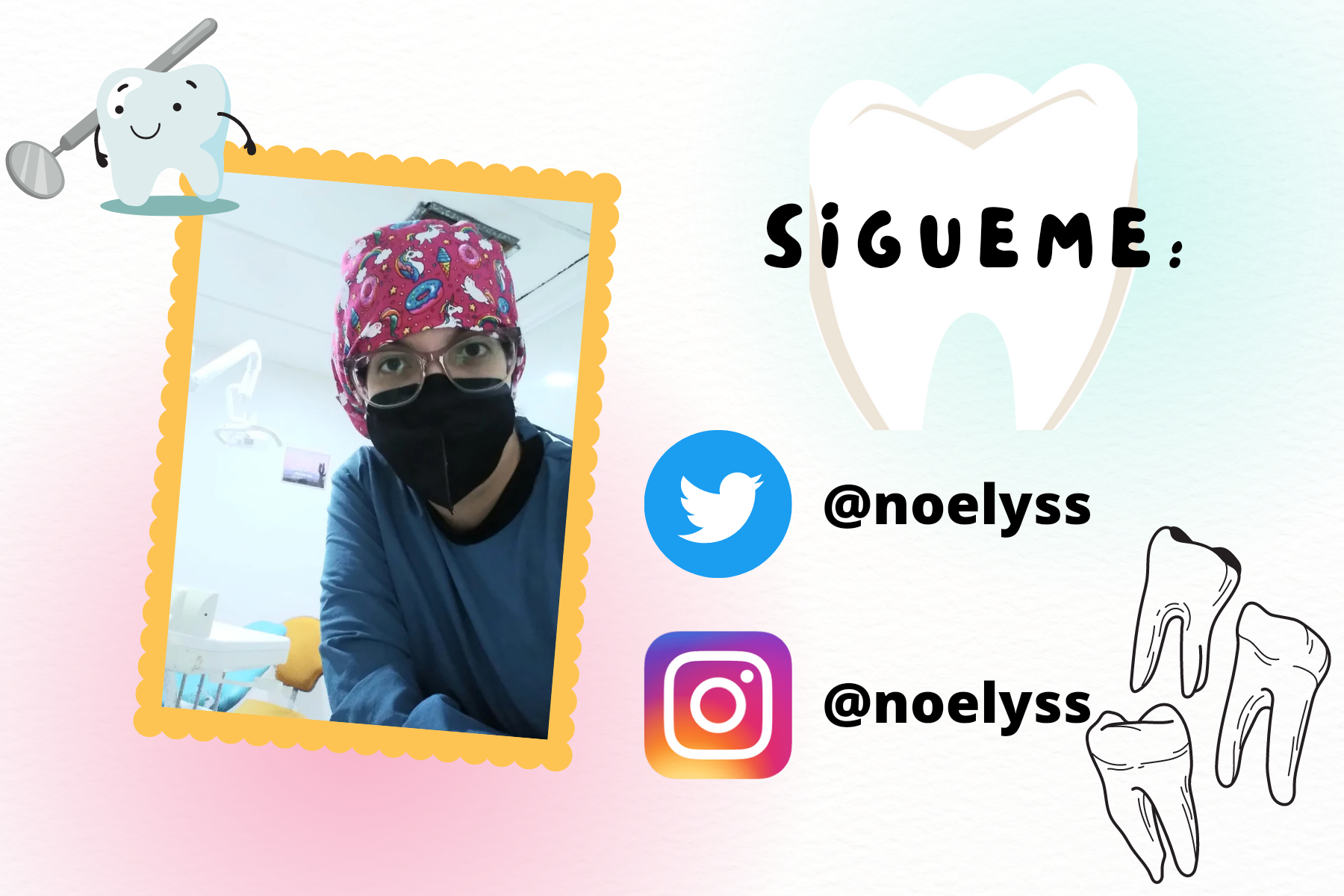
Texto traducido en Deelp
The rewards earned on this comment will go directly to the people( @noalys ) sharing the post on Twitter as long as they are registered with @poshtoken. Sign up at https://hiveposh.com.
Su post ha sido valorado por @ramonycajal
Brrrr... this does not look to be very funny :)
Yes, it is a subject that patients don't like very much, but it is necessary. Best regards 🤗 @lemouth
:)
Thanks for your contribution to the STEMsocial community. Feel free to join us on discord to get to know the rest of us!
Please consider delegating to the @stemsocial account (85% of the curation rewards are returned).
You may also include @stemsocial as a beneficiary of the rewards of this post to get a stronger support.